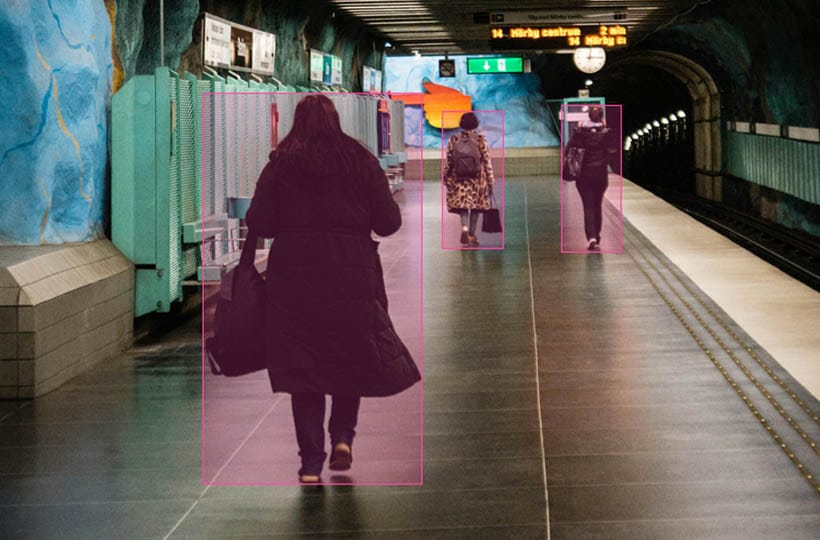Trend Analysis of Labeling Errors: Improving Over Time

Understanding how labeling errors change over time can reveal a lot about a machine learning pipeline's strengths and weaknesses. Analyzing the trends of these errors helps teams track whether their labeling methods are improving, staying consistent, or deteriorating as the dataset grows. It can also reveal patterns related to annotation quality, data complexity, or the evolution of model behavior.
This type of analysis is not just about counting errors but also about understanding them in context. For example, a sudden decrease in the error rate may mean that labeling developers are getting better or signal a shift to simpler examples. On the other hand, an increase in labeling errors over time may indicate fatigue, vague instructions, or a mismatch between the labeling team's experience and the data. Trend analysis helps to make sense of these signals by offering a long-term perspective.
Definition and Importance
Labeling error trend analysis is the process of monitoring and evaluating how annotation errors change over time. It usually uses metrics collected during human or model-driven labeling workflows.
It helps to determine whether the quality of annotations is improving, stable, or declining. This information can be used to inform interventions such as retraining annotators, clarifying label definitions, or redesigning the labeling interface. This results in higher-quality datasets, which directly improve model performance and reduce future errors.
Teams may miss systemic issues or falsely assume progress without tracking error trends. Long-term visibility into labeling quality increases confidence in the data and helps prevent costly model failures caused by poor training resources. In rapidly evolving projects, it also ensures that growing datasets do not accumulate hidden flaws unnoticed.

Common Types of Labeling Errors
- Incorrect label assignment. The label applied to a data point does not match its actual content, such as labeling a cat as a dog in an image dataset.
- Incorrect labeling. Similar data points are labeled differently, often due to unclear rules or different interpretations of the regulations by multiple annotators.
- Overlabeling (commission errors). Extra labels are added where they shouldn't be, such as labeling too many objects or applying multiple labels to an element of the same class unnecessarily.
- Boundary errors. A label is approximately correct but not precisely defined, such as bounding boxes that do not completely enclose an object or segmentations that skip edges.
The Role of Data in Trend Analysis
Data volume, variety, and structure directly affect the types of errors that occur and how visible they are. High-quality data collection makes it easier to identify real trends, while noisy or sparse data can distort the picture. It's not just about having data, and it's about ensuring that the data is well organized, versioned, and linked to the history of its labeling.
In practice, this means tracking metadata along with each annotation: who tagged it, when, how long it took, and whether it was verified. With enough details, the data can be divided by annotator, task type, complexity, or other factors to identify targeted trends. For example, bugs can be grouped around a specific category or spike after a tool update. Over time, accumulating this information creates a timeline of labeling behavior. Data makes trend analysis possible based on measurable, repeatable patterns rather than assumptions or one-off observations.
Data Collection Methods
- Automated tools and metadata collection. Annotation platforms automatically record timestamps, tag versions, annotator IDs, and browsing actions to create a complete audit trail.
- Feedback on review and quality control. Quality assurance workflows generate patch logs that capture the nature and frequency of labeling errors, which help track error trends.
- Model-based labeling output. Labels generated or suggested by the model are compared to human corrections, highlighting common patterns of mislabeling over time.
- Crowdsourcing platform analytics. The platform can provide performance metrics, agreement rates, and error rates at a large scale when using distributed labelers.
Identifying Trends in Labeling Errors
Identifying trends in labeling errors involves more than just counting mistakes; it also involves understanding how and why they change over time. Patterns may emerge gradually, such as a slow improvement in accuracy as annotators gain experience, or they may appear as sudden spikes following tool updates or changes in instructions. Identifying these trends requires looking at error rates in the context of time, task type, and annotator behavior. Teams typically compare error rates between batches, review logs, and reconciliation scores to see where things are headed. Over time, these comparisons show whether the labeling process is improving, stagnating, or declining.
To make this analysis effective, setting consistent checkpoints and tracking the right metrics is essential. Metrics such as agreement between annotators, correction rates, and review results can signal new problems or confirm positive changes. Visualizing trends through time-series graphs or heat maps helps teams quickly understand what's happening and where to focus. It also allows for more informed conversations between labeling teams, reviewers, and modelers.

Statistical Techniques
- Time series analysis tracks error rates, consistency rates, or patch rates over time, identifying upward or downward trends and seasonality.
- Correlation analysis measures the relationship between variables, such as whether the number of errors increases with the complexity of the task or decreases with the annotator's experience.
- ANOVA (analysis of variance) is useful for comparing average error rates across multiple groups (e.g., different markup tools, teams, or time segments).
- Regression analysis. Models the impact of several factors (e.g., task duration, data type, annotation tool) on labeling error rates to identify key drivers.
- Control charts, commonly used in quality control settings, track the change in errors over time and flag deviations from expected behavior.
Visualizing Data for Insight
Well-designed visuals can quickly highlight patterns, shifts, and anomalies that may be missed in raw numbers. For example, a simple line graph can show how error rates change over time, while heat maps can reveal which categories or annotators are most prone to errors. Visualization makes it easier to identify exceptions, compare performance between packages, or understand how changes in the process affect labeling quality. It also helps teams to align their actions faster by turning abstract metrics into something tangible and shareable.
Choosing the proper visualization depends on the question being asked. Time series charts are ideal for tracking trends over weeks or projects. Bar charts can compare error types or annotator performance side by side. Confusion matrices help analyze how often specific labels are confused with others, especially in classification tasks. Dot plots can show the relationships between label confidence and error rates. The goal is not just to make the data attractive but meaningful so teams can identify problems early and make confident, data-driven improvements.
Factors Contributing to Labeling Errors
- Insufficient training or adaptation. Annotators who have not received adequate instruction, examples, or feedback are likelier to mislabel data, especially in complex tasks.
- Low engagement in the task or fatigue. Repetitive labeling can lead to distraction, shortcuts, or mental exhaustion, increasing the likelihood of errors due to negligence over time.
- Insufficient context or metadata. The lack of related information (e.g., conversation history, image zoom, or data source) can make it difficult for annotators to determine the correct labeling.
- High task complexity. Tasks that require subject matter expertise or nuanced interpretation (e.g., medical images, legal documents) tend to have a higher error rate without expert review.
- Changes to the instructions in the middle of the project. When labeling guidelines are revised after the work has begun, previous annotations may conflict with the new standards, resulting in non-compliance.
Methods for Mitigating Labeling Errors
- Clear and detailed labeling instructions. Thorough documentation rich in examples helps annotators understand exactly what is expected of them, reducing ambiguity and misinterpretation.
- Training of annotators. Adaptation sessions, practical assignments, and periodic knowledge updates ensure that annotators meet the task requirements before processing production data.
- Regular quality checks and feedback. Setting up a structured review process with actionable feedback helps to identify errors early and allows annotators to learn and improve over time.
- Dynamic error dashboards. Real-time monitoring of error trends will enable teams to detect spikes, identify recurring issues, and respond quickly with interventions.
- Simplify and decompose tasks. Breaking down complex tasks into smaller, more manageable steps (e.g., classification before segmentation) reduces cognitive load and the likelihood of errors.
- Improved tools and intelligent user interface design. Features such as autocomplete, label suggestions, zoom controls, and validation checks help annotators work more accurately and efficiently.
- Use of pre-labeling and modeling assistance. Using model-generated suggestions as a starting point can help annotators achieve more accurate labels, especially in repetitive tasks.
The Impact of Technology on Labeling Accuracy
Advanced annotation tools now include real-time validation, intuitive interfaces, and automated quality checks to help reduce human error. Machine learning models help by pre-labeling data or highlighting uncertain cases, allowing annotators to focus their attention where it is most needed. In addition, collaboration platforms provide smoother communication between labelers and reviewers, which helps identify errors early.
However, technology is not a panacea. Poorly designed tools or over-reliance on automated suggestions can sometimes lead to new errors or biases. For example, annotators may inadvertently emphasize these errors if the auxiliary model is consistently wrong in some instances. There is also a risk that complex interfaces will overwhelm users, leading to frustration and mistakes. This is why thoughtful technology integration, with ongoing user feedback and quality monitoring, is critical. When done right, technology enhances the human experience and makes labeling faster and more accurate.
Automation and AI
Automated systems can quickly handle repetitive or simple labeling tasks, allowing human annotators to focus on more complex or nuanced cases. AI-powered tools often provide preliminary labels or suggestions based on learned patterns, which annotators can check or correct. This collaboration between humans and machines helps reduce errors, speed up workflows, and maintain consistent labeling standards. As AI models improve, their ability to assist effectively increases, creating a feedback loop that enhances labeling quality and model performance.
At the same time, over-reliance on automation comes with risks. If AI-generated labels are accepted without sufficient validation, errors can spread across the dataset and affect model training. Automated systems may also have problems with rare or ambiguous cases where human judgment remains crucial.
Best Practices for Continuous Improvement
Best practices for continuous improvement in labeling focus on creating a feedback-rich and data-driven environment that evolves with the project's needs. Regularly measuring labeling quality and error trends helps teams identify weaknesses before they become serious problems. It is important to keep annotation guidelines up-to-date and followed, reflecting lessons learned and changes in project scope. Encouraging open communication between annotators, reviewers, and data specialists promotes a shared understanding and faster resolution of problems.
Another key practice is to establish regular audits and incorporate user feedback loops. Periodic spot checks can verify that corrective actions are working and identify new issues. Combining manual controls with automated monitoring helps to maintain a balance between scalability and accuracy. Teams should also prioritize flexibility, adapting workflows or tools in response to changing data characteristics or model requirements.
Summary
Practical analysis of labeling error trends is vital for teams to improve data quality and enhance machine learning outcomes. By using detailed data collection, advanced tools, and statistical methods, organizations gain deeper insights into the dynamics of annotation performance. Tackling the root causes of errors through targeted interventions and thoughtful integration of technologies fosters a culture of continuous improvement. This approach increases the reliability of labeled datasets and supports more efficient workflows and the development of more robust models over time.
FAQ
What is the purpose of trend analysis in labeling errors?
Trend analysis helps track how labeling errors evolve, revealing patterns that guide improvements in annotation quality and process efficiency.
Why is data quality important in trend analysis?
High-quality, well-organized data ensures that error trends are accurately reflected and not obscured by noise or inconsistencies, making insights reliable.
What types of labeling errors are most common?
Common errors include incorrect labels, inconsistent annotations, ambiguous labeling, omissions, and boundary mistakes, which affect data quality differently.
How do tools enhance the analysis of labeling errors?
Tools like dashboards, statistical software, and annotation platform analytics enable visualization, detailed breakdowns, and monitoring of error trends, facilitating quicker, data-driven decisions.
What role does statistical analysis play in understanding error trends?
Statistical techniques help identify significant changes, correlations, and patterns in labeling errors, providing evidence-based insights rather than assumptions.
How can visualization aid in managing labeling quality?
Visuals like time series plots and heatmaps make error trends easier to interpret, helping teams spot issues and communicate findings effectively.
What factors typically contribute to labeling errors?
Errors often result from ambiguous guidelines, inadequate training, tool limitations, task complexity, annotator fatigue, or inconsistent review processes.
What strategies help reduce labeling errors?
Clear guidelines, regular training, consensus labeling, tool enhancements, and real-time feedback loops all contribute to lowering error rates and improving quality.
How does automation impact labeling accuracy?
Automation speeds up labeling and supports annotators with suggestions, but it must be balanced with human oversight to prevent mistakes from propagating.
Why is continuous improvement critical in labeling workflows?
Ongoing monitoring, feedback, and adaptation ensure that annotation quality keeps pace with project changes, maintaining data reliability and supporting better model outcomes.

